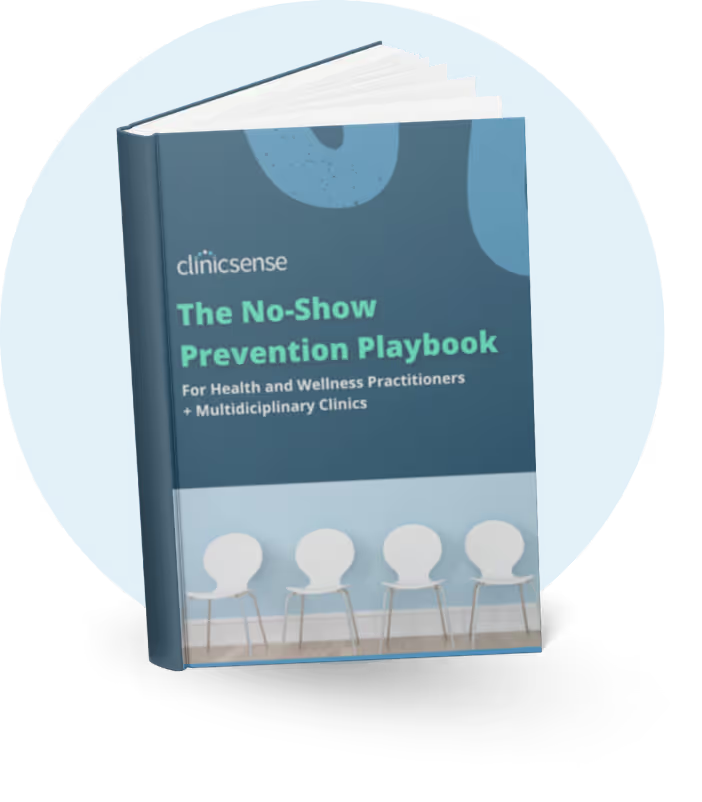Massage Therapy Business Tips
July 17, 2024

In this article, we will cover trends for 2024, including:
The AMTA recently released its 2024 Massage Profession Research Report, packed with valuable insights that can help you thrive in your practice. We’ve gathered the highlights from this comprehensive report to give you a clear picture of the latest trends and tips for success. By understanding who’s getting massages, the demographics of your peers, and the best tools to enhance your business, you can stay ahead of the curve and better serve your clients. Let’s dive into the key findings and see how they can benefit you!
According to the data collected by the AMTA, people of all ages get massages. Those in higher income brackets are more likely to get a massage. Women and parents with children under 18 are also more likely to get massages than other people.

This ClinicSense image uses data from the AMTA 2024 Massage Profession Research Report.
This is important information to know when marketing yourself as a massage therapist. The AMTA collected a lot of valuable massage client demographic data. You can use this information to define your target audience, choose a massage modality or niche, and create a marketing strategy with these demographics in mind. Let’s take a closer look at who’s getting massages in 2024.
The AMTA collected information from people who received massage in 2023, and found that age, gender, community, and education can all affect someone’s likelihood of getting a massage. Use this information to create a clear picture of your ideal clients and what they need.
27% of women got a massage and 22% of men got a massage.
51% of those who got a massage were college graduates. 25% had some college education, but no degree, and 15% reported their highest level of education being a high school diploma.
Those living in urban and suburban areas are more likely to get a massage than those living in rural areas. 33% of massage clients lived in urban areas, 24% in suburban areas, and 15% in rural communities.
Data shows that age has a big impact on the likelihood of someone getting a massage, as well as the frequency.
According to the data, 95% of consumers believe the effectiveness of massage therapy in reducing pain and improving overall health and wellness. The general consensus is that massage therapy is a form of healthcare, and 77% of consumers would recommend massage to someone friends and family.
The top 2 reasons people get massages are for medical reasons (61%) and for mental health (56%). Here are the stats:

This ClinicSense image uses data from the AMTA 2024 Massage Profession Research Report.
Polls conducted by the AMTA reported the most common places for consumers to get a massage are at their massage therapist’s office (45%), spas (25%), and massage franchises (10%). It’s important to note that many consumers don’t know the difference between a spa and massage franchise.
81% of consumers find their massage therapist via a referral. Many clients (48%) googled massage therapists nearby to find their therapist, and 40% connected with their therapist on social media before making that first appointment. Other providers, locator services, and community events were also places clients and therapists connected.
It’s important to note that even though 81% of clients were referred to their current massage therapist, only 40% of therapists actively promote referrals. If you’re a massage therapist who doesn’t actively ask client for referrals, consider sending periodic referral requests to get more clients.

This ClinicSense image uses data from the AMTA 2024 Massage Profession Research Report.
The massage therapy industry is dominated by women. According to recent AMTA polls, 81% percent of massage therapists identify as female. 91% have achieved formal education beyond a high school diploma, and, for the majority, massage therapy is not a first career.
Beyond their training for massage therapy, 91% of massage therapists have formal education beyond a high school diploma. 42% went to college and obtained a bachelor's degree or higher, and 12% have earned a certificate from a technical or vocational school.
There are many factors that impact a massage therapist’s income, such as their type of employment, work setting, service rate, tips, and more. The most recent numbers from the AMTA show that in 2022 the average annual gross income was $34,425, with hourly wages ranging $27.08 - $89.12.
These averages include figures from a wide range of demographics and geographic locations. The average in your area and specific workplace could be different. It’s also important to note that only 36% of therapists reported massage therapy as their sole source of income. Many only do massage part-time.
Let’s take a look at the biggest factors that impact a massage therapist’s income.

This ClinicSense image uses data from the AMTA 2024 Massage Profession Research Report.
Massage therapists are compensated differently based on their type of employment. Whether you’re an employee or independent contractor can impact your pay rate and benefits. Sole proprietors set their own rates, keep a higher percentage of client rates, but have more business expenses and are responsible for creating their own self-employed benefits package.
Here’s what the most recent numbers from the AMTA reported for annual gross income based on employment type:
73% of massage therapists are sole-practitioners. However, massage therapists have many employment arrangements available to them and 18% work in more than one type of practice. AMTA reported these stats in 2024:
The average massage therapist works in 2 different settings. Here’s where they’re working in 2024:

This ClinicSense image uses data from the AMTA 2024 Massage Profession Research Report.
Now that you know where massage therapists are working, let’s take a closer look at what makes them successful.
Technology makes running a successful massage practice more feasible for both massage business owners and solo-practitioners. Massage therapists use technology to market their practice and keep it running smoothly. They often use SOAP Notes software, social media, company websites, marketing tools, credit card processors, and booking software.
Let’s take a closer look at what massage therapists use to run and grow their practices, according to the AMTA 2024 Research Report.
65% of massage therapists have a website for their practice, and an additional 6% plan to build one this year. Creating a massage therapy website is important, because research shows that 48% of consumers find their massage therapist via their website.
66% of massage businesses have a Google Business Profile that helps them show up in search results, collect Google Reviews, and show up on Google maps. This makes it easier for new clients to find them.
68% of massage businesses have a Facebook page. Facebook is used more than any other social media platform to promote massage therapy practices, with Instagram coming in 2nd at about 55%. Other social media platforms are rarely used by massage therapists for business purposes.
Here’s how massage therapists use social media in their massage practice:
When using social media to promote your practice, it’s helpful to link your scheduling software to your social media profile. That way when people see the massage social media posts you share, they can easily book an appointment right from the platform.
Many massage therapists use online locator services. The most frequently used locator services used by massage therapists is the AMTA’s Find A Massage Therapist locator service.
24% of massage therapists use review sites like Yelp to promote their practice. Getting more reviews helps increase visibility and improve confidence in your business.
20% of massage businesses invested in paid advertising on social platforms. Creating facebook ads for your massage business can help you reach your target audience because you can choose who your ad is displayed to.
Some massage business owners use deal sites to attract new customers. This strategy is far less common among sole-practitioners, less than 5%.
Both massage therapist employers and independent massage therapists use practice management software and similar tools to run the practice. Let’s take a look at the most common types of software used in massage therapy businesses.

This ClinicSense image uses data from the AMTA 2024 Massage Profession Research Report.
The majority of massage practices accept credit cards, which requires using a credit card processor like Square or Stripe.
Nearly 70% of massage businesses and 50% of solo-practitioners use some type of scheduling software to streamline appointment booking and allow clients to book appointments online.
Around 60% of all massage businesses stream music for their treatment rooms and/or waiting area.
Solo-practitioners often accept online payments to streamline their checkout process and eliminate the need for a receptionist. Less than 50% of larger massage businesses integrate online payments into their sales process.
Selling gift certificates online is helping massage businesses big and small increase their revenue. This strategy is more commonly used by massage therapist employers, but solo-practitioners are reaping the easy rewards of online gift certificates too.
Practice management software is an invaluable tool for massage businesses because it’s an all-in-on solution for building, running, and growing your practice. 48% of massage employers use this software to manage everyday operations, and solo-practitioners are starting to use it too.
Bookkeeping is a big part of running any type of business, including massage. It helps track your finances, prepares you for filing your business taxes, runs financial reports, and helps with financial forecasting. That’s why accounting software like QuickBooks is commonly used in massage businesses.
40% of massage therapy employers use email newsletters to market their businesses. Why? Because it works. It’s easy access to your customers. Most solo-practitioners are missing out on the revenue this marketing strategy can generate. Keeping in touch with your clients is the best way to boost retention and get more referrals. You can find email newsletter ideas for massage therapists here, if you need help brainstorming.
40% of all massage practices use SOAP Note software for charting. This eliminates the need for paper files and makes it easy to share information. Writing effective SOAP notes makes for better client care and better massage therapy treatment plans. Going digital makes it fast and easy. Give it a try with a SOAP Note free trial from ClinicSense.


.avif)
.avif)
.avif)









For 14 days